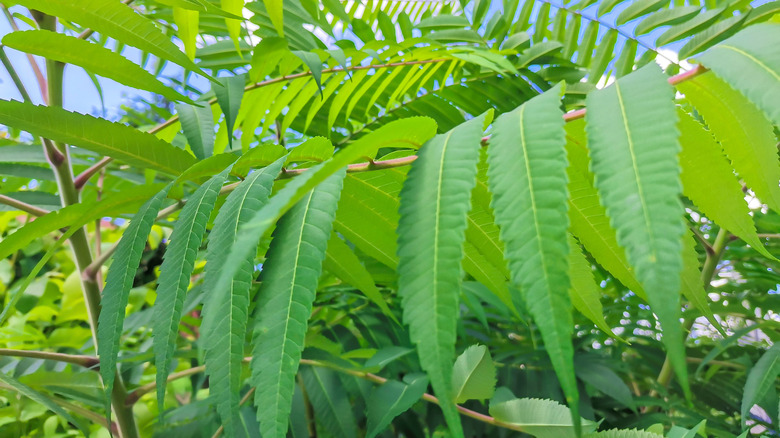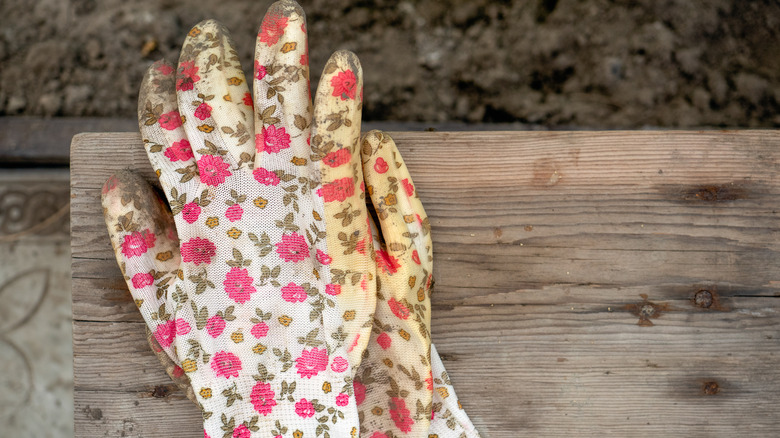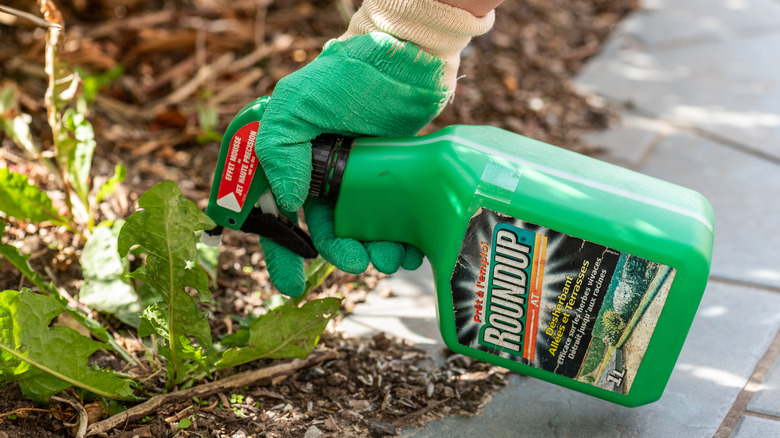The Best Way To Get Rid Of Poison Sumac
While many people are familiar with rash-inducing plants like poison ivy and poison oak, there is a slightly lesser-known plant that can cause similar breakouts. This plant is poison sumac (toxicodendron vernix), which Britannica notes is also called poison elder or poisonous shrub and is a relative of the cashew family.
According to Healthline, poison sumac has an oil on its surface called urushiol. Skin contact with the oil will usually result in an itchy, very irritated rash and may also result in a burning sensation, swelling, and blisters. The rash can last for a few weeks. As opposed to poison ivy or oak, poison sumac has longer, flatter stems that come to a V-shaped tip. Most poisonous plants also have reddish leaves, but poison sumac has bright to dark green leaves depending on the time of year. It does, however, have reddish stems that can help identify it. If you've noticed a patch of poison sumac in your yard, it is highly advised that you carefully and properly remove it.
Take the necessary precautions
Removing poisonous plants from your yard like poison sumac is a task that should be done with extreme caution and heavy preparation. You'll have to get up close and personal with the plant to do the job properly, which makes you vulnerable to getting a contact rash. If you have the resources to do so, consider hiring a professional company that can help thoroughly remove the plant and prevent it from coming back. According to Fixr, this can cost anywhere from $300 to $850. While this is pricey, it's worth not having to deal with a nasty rash for weeks.
If you are planning on removing the poison sumac on your own, be sure to take extensive measures to protect yourself against the rash. You'll want to plan your removal on a cooler day, as you'll need to wear long sleeves, long pants, high boots, and ideally a hat, gloves, mask, and goggles — make sure you are covered head to toe to protect against the plant (via PlantSnap). You'll also want to pick a day that isn't windy.
Target with chemical herbicides
Once you have all your preparations in place, it's time to remove the plant. Begin by grabbing a pair of sharp shears, and cutting down the plant as close as you can to the ground, recommends PlantSnap. If the roots are too thick for handheld shears, you can use a saw. Immediately throw the cut-down poison sumac away. Do not burn it or add it to your compost. Instead, throw it out in sturdy plastic trash bags, but first, make sure it's legal to throw it out with your trash. If not, contact your local hazardous waste facility.
Next, grab a heavy-duty chemical herbicide. Any product with glyphosate, such as Roundup, should work (via University of Georgia Extension). Look for products for poison ivy control, too. This may kill some surrounding foliage, but it's worth it to remove the poison sumac. You can also try to dig out the roots, but older plants may have root systems that are too large to remove on your own. You may need to repeat this process a few times to totally get rid of the poison sumac patches in your yard. Once you're done spraying, immediately disinfect all the gardening tools you used with rubbing alcohol. Use fresh, clean gloves to remove your gardening clothes, shower, and thoroughly wash and disinfect your clothing and gear.


